The Doric Arch and Muses in Stowe Gardens
Stowe Gardens' Doric Arch reminds us of how much our forebears loved the elegance of classical design, as well as myths and legends from ancient Hellenic and Roman culture. Here, the Doric Arch serves as the focus point for statues of the god Apollo and the nine Muses - the goddesses of the arts, literature, and science.
Apollo, as the sun god of Greek mythology, is the patron of the arts, poetry, knowledge, and music, while the nine Muses were sisters, and daughters of Zeus and Mnemosyne.
An impressive part of Stowe Gardens since the early 18th century, this group of statues was originally part of the Parterre garden. They were moved to the lower slope of the Elysian Fields in the 1750s and finally - in the 1760s - the statues were relocated to surround the Doric Arch.
In the time since, the original statues were lost or damaged beyond repair. Fortunately, the National Trust commissioned replacements and restored the 1760s scene after archaeologists discovered the exact location of the original positions of the sculptures. If you visit now, you can see the Arch, the gravel path, and the statues of the Muses as they would have been back in the 1760s.
For more information on Stowe Gardens and Parkland and opening times and events please visit the National Trust website here.
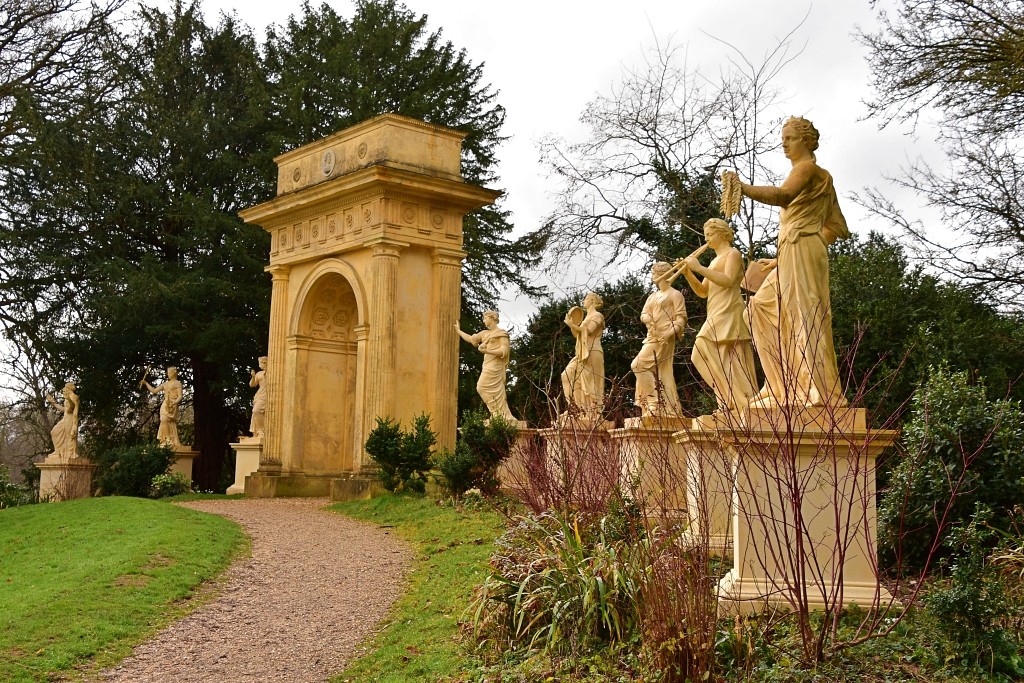 The Doric Arch and Ten Muses in Stowe Gardens © essentially-england.com
The Doric Arch and Ten Muses in Stowe Gardens © essentially-england.com
Meet the Ten Muses Around the Doric Arch in Stowe Gardens
I have listed the Muses as they are seen, right to left, in the photograph above.
Calliope,
the Muse of Epic Poetry
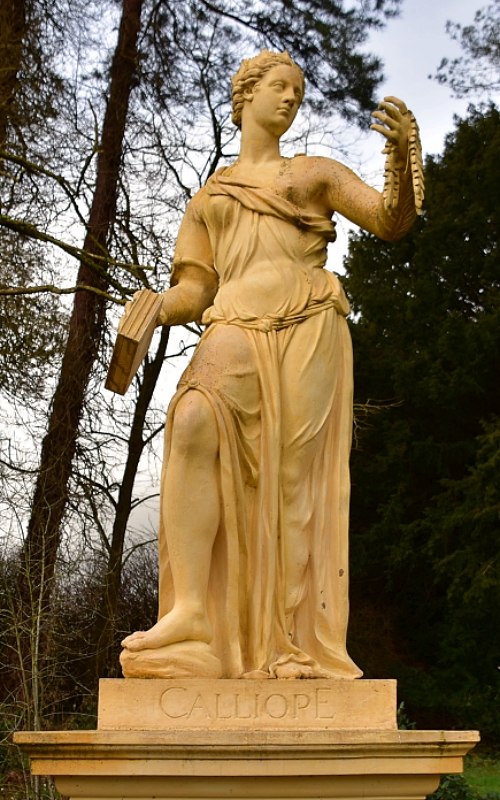 Calliope © essentially-england.com
Calliope © essentially-england.comMelpomene, the Muse of Tragedy
Euterpe,
the Muse of Lyric Poetry
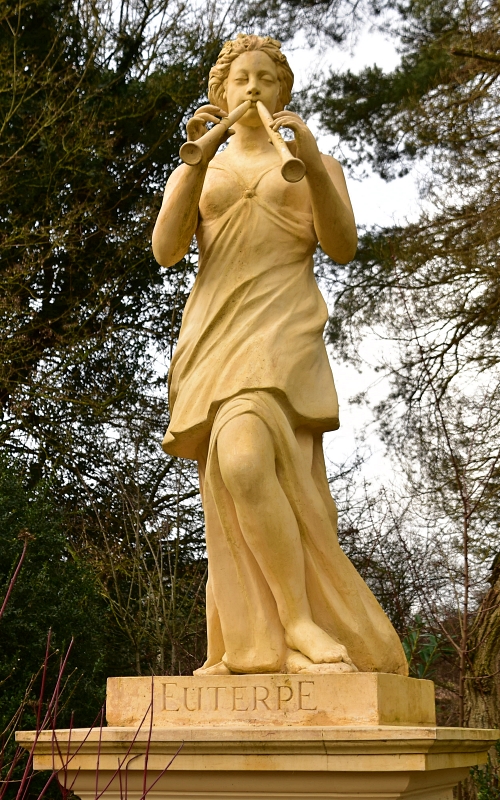 Euterpe © essentially-england.com
Euterpe © essentially-england.comErato, the Muse of Erotic Poetry
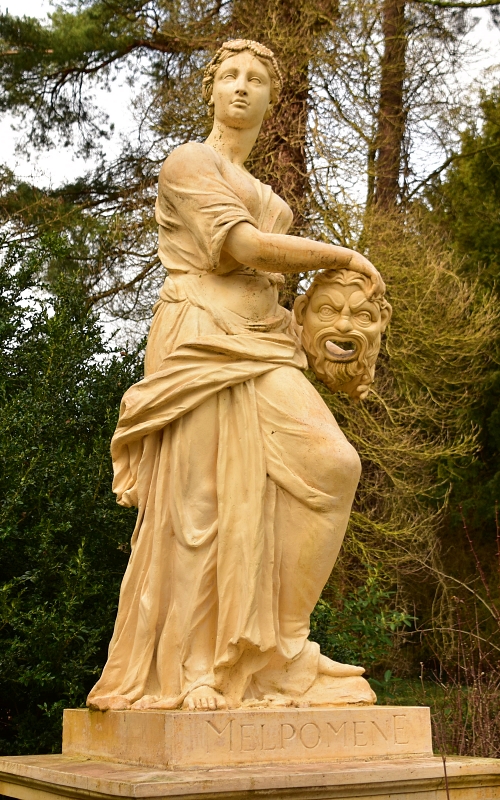 Melpomene © essentially-england.com
Melpomene © essentially-england.com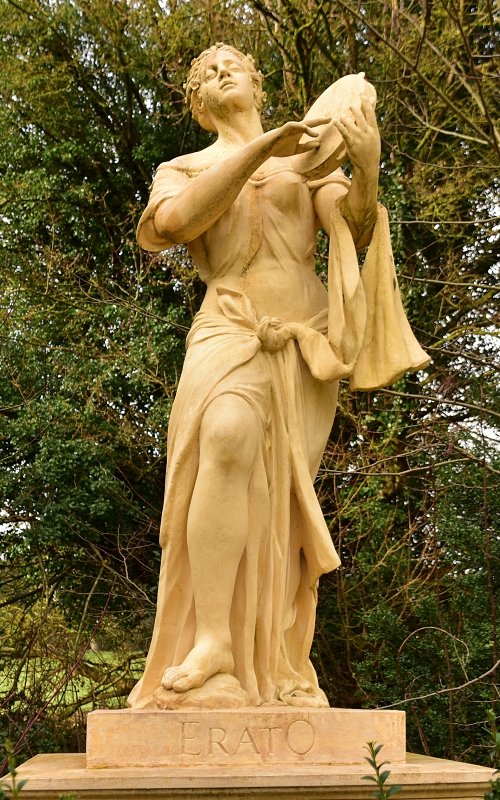 Erato © essentially-england.com
Erato © essentially-england.comOurania, the Muse of Astronomy
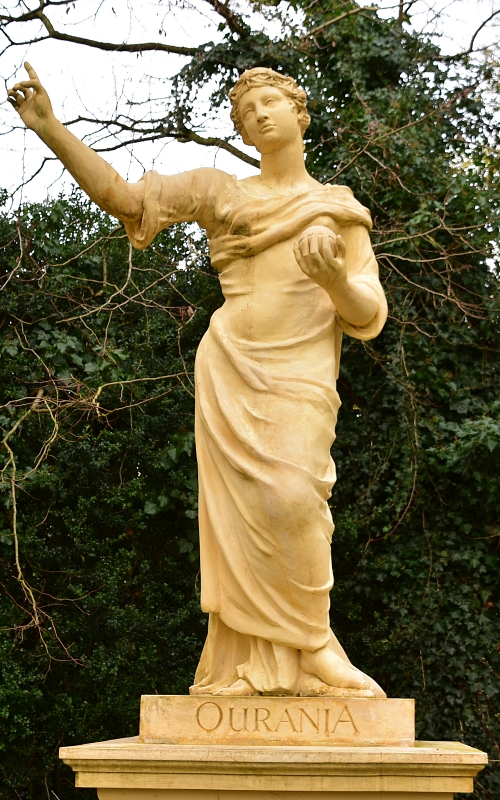 Ourania © essentially-england.com
Ourania © essentially-england.comPolyhymnia, the Muse of Sacred Poetry
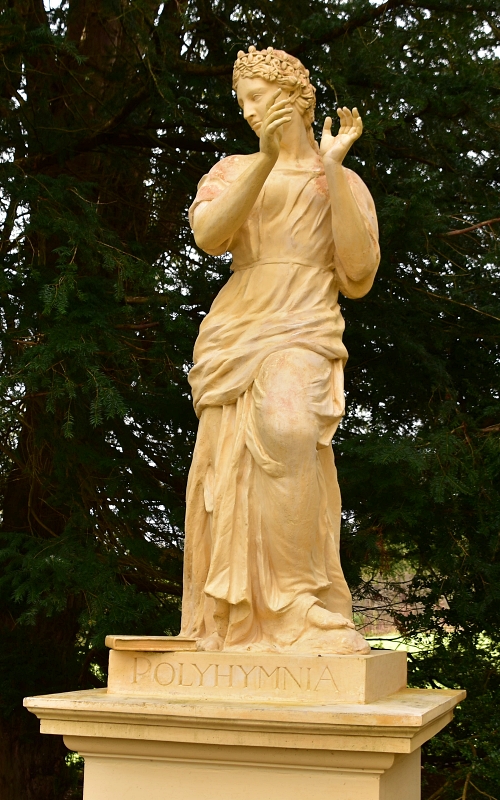 Polyhymnia © essentially-england.com
Polyhymnia © essentially-england.comTerpsichore, the Muse of Dance
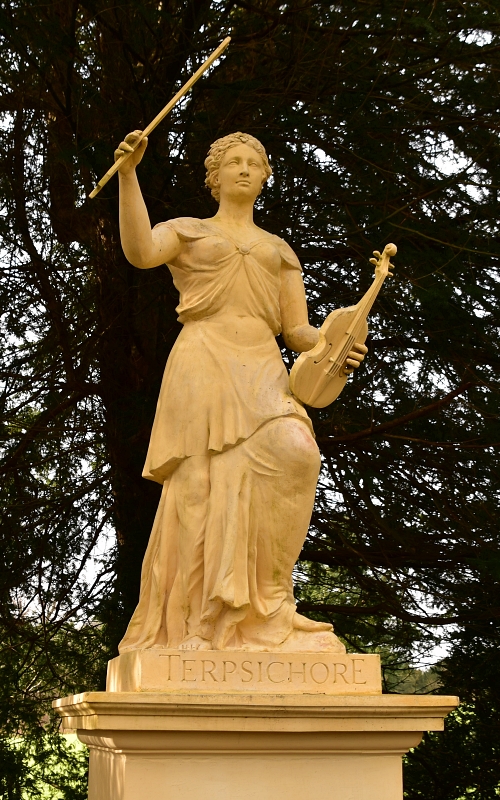 Terpsichore © essentially-england.com
Terpsichore © essentially-england.comThalia, the Muse of Comedy
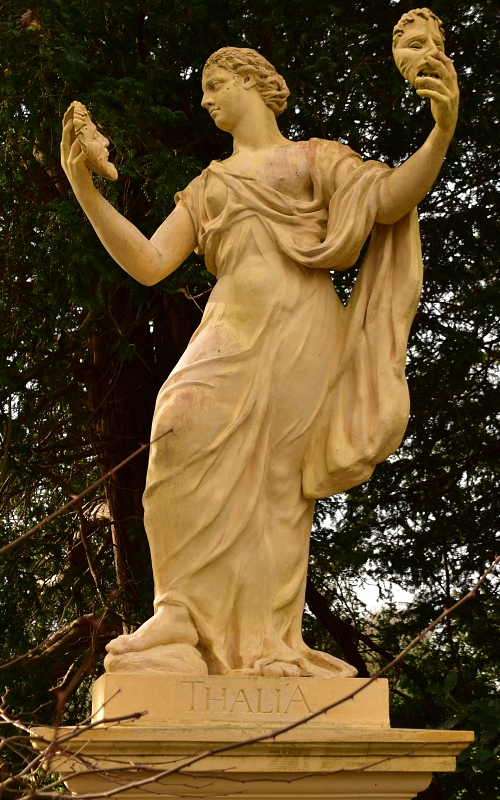 Thalia © essentially-england.com
Thalia © essentially-england.comClio, the Muse of History
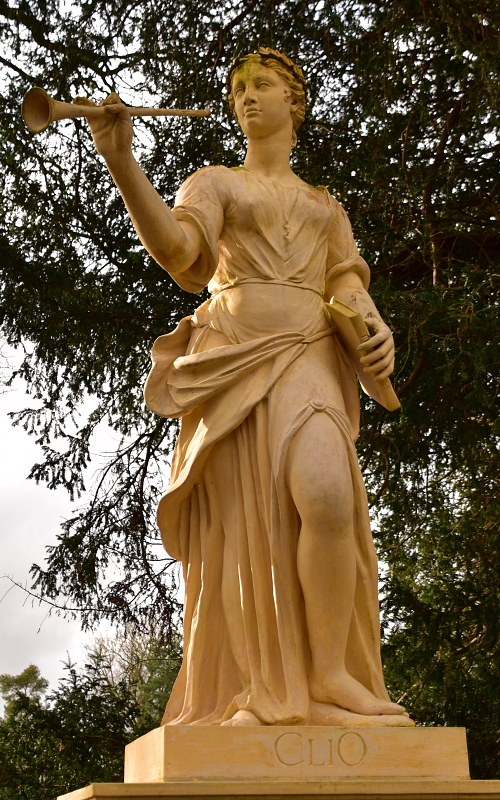 Clio © essentially-england.com
Clio © essentially-england.comApollo, the Sun God
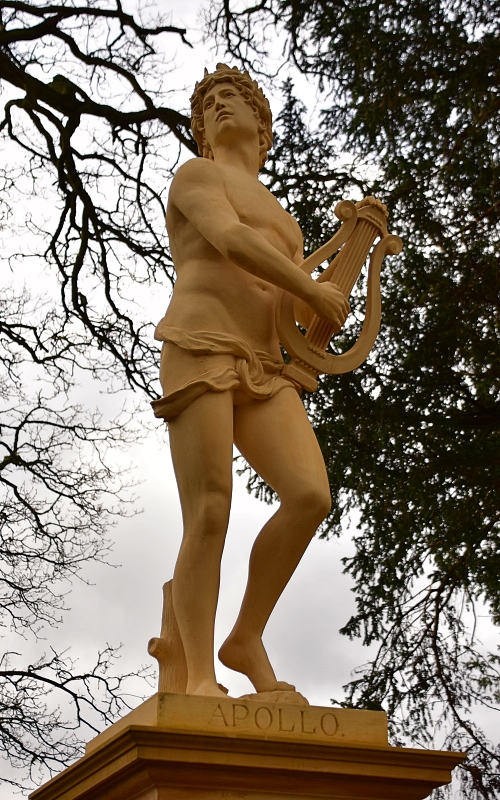 Apollo © essentially-england.com
Apollo © essentially-england.comIf you'd like to find all the monuments of Stowe Gardens, then why not make a long weekend of it? Look for local accommodation using our Booking.com search box.


